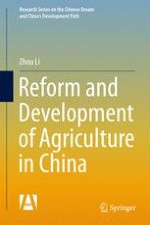2017 | OriginalPaper | Chapter
5. Transformations to Agriculture and Agricultural Policies in China
Author : Zhou Li
Published in: Reform and Development of Agriculture in China
Publisher: Springer Singapore
Activate our intelligent search to find suitable subject content or patents.
Select sections of text to find matching patents with Artificial Intelligence. powered by
Select sections of text to find additional relevant content using AI-assisted search. powered by
